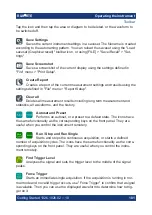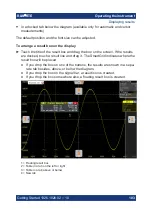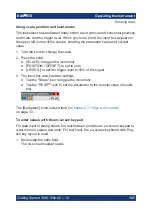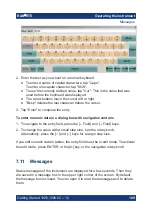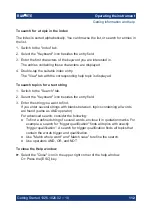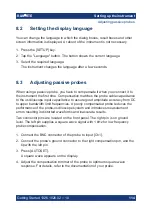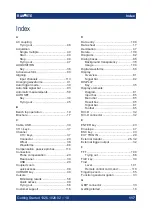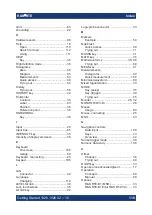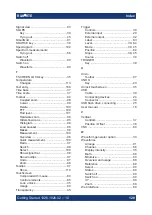
Setting up the instrument
R&S
®
RTE
114
Getting Started 1326.1026.02 ─ 10
8.2
Setting the display language
You can change the language in which the dialog boxes, result boxes and other
screen information is displayed. A reboot of the instrument is not necessary.
1. Press the [SETUP] key.
2. Tap the "Language" button. The button shows the current language.
3. Select the required language.
The instrument changes the language after a few seconds.
8.3
Adjusting passive probes
When using a passive probe, you have to compensate it when you connect it to
the instrument the first time. Compensation matches the probe cable capacitance
to the oscilloscope input capacitance to assure good amplitude accuracy from DC
to upper bandwidth limit frequencies. A poorly compensated probe reduces the
performance of the probe-oscilloscope system and introduces measurement
errors resulting in distorted waveforms and inaccurate results.
Two connector pins are located on the front panel. The right pin is on ground
level. The left pin supplies a square wave signal with 1 kHz for low frequency
probe compensation.
1. Connect the BNC connector of the probe to input [Ch1].
2. Connect the probe's ground connector to the right compensation pin, and the
tip with the left pin.
3. Press [AUTOSET].
A square wave appears on the display.
4. Adjust the compensation trimmer of the probe to optimum square wave
response. For details, refer to the documentation of your probe.
Adjusting passive probes


